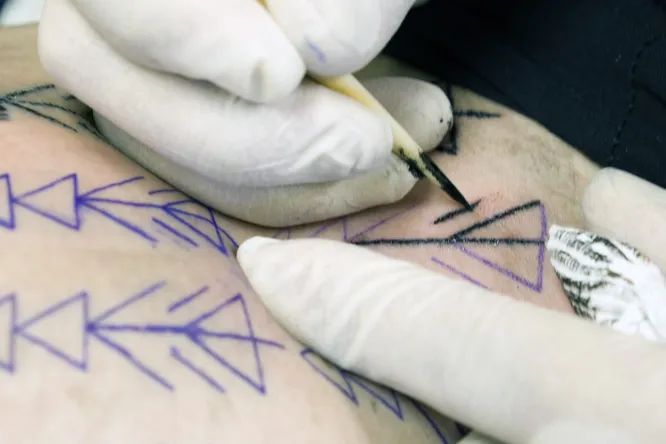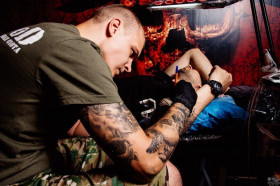Secrets of Ancient Crafts: How the Mummy Ötzi is Changing Perceptions of Tattoos!

The mummy, known as Ötzi, discovered in a frozen state in the Alps, has become of interest to scientists because of the intricate patterns on its body. Previously, it was believed that the patterns were applied by rubbing black soot into skin incisions. However, a new experiment proposes an alternative theory.
A group of researchers led by American archaeologist Aaron Deter-Wolf conducted a completely unique experiment. Tattoo artist Danny Reid agreed to apply several patterns to his leg using tools available to our ancestors, as well as their modern counterparts, including animal bones, obsidian, and modern tattoo needles. During the study, each tattoo was carefully documented, and the healing process was closely observed.
Comparing the results of the experiment with the tattoos on the "Ice Man" Ötzi mummy revealed significant differences from the previously established theory.
Contrary to previous beliefs, the research results indicate that the mummy's tattoos were not made by incisions. Microscopic analysis of the pattern showed characteristics such as uneven line edges and rounded ends, which are characteristic features of the hand-poke technique.

This traditional method involves repeatedly piercing the skin with a sharp instrument soaked in coloring pigment to introduce it under the skin surface. The study confirmed that the tattoos on the Ötzi mummy's body closely resemble those that could have been created using this method, presumably with bone or copper needles.

This research team previously made another remarkable discovery. When analyzing artifacts found in 1985 in Fernvale during excavations of an ancient settlement of Native Americans, scientists discovered sharpened turkey bones that intrigued them. The wear on the bones indicated that they could have been used for tattooing. This type of wear is similar to that observed on tools presumably used for tattooing, although archaeologists typically found sharpened deer bones at that time.
Chemical analysis revealed ink residues on the surface of the found instruments similar to those used for tattooing about 3500 years ago. This arsenal of ancient tools, reminiscent of a sharp awl, initially puzzled researchers who previously believed they were associated with the process of clothing creation.

The presence of bivalve mollusk shells near the ink traces also indicates their use as containers for pigment during tattooing. This discovery suggests that Native Americans applied tattoos to their bodies much earlier than previously assumed by anthropologists.
Before this, it was believed that the oldest tattooing tool was an adaptation made from a cactus needle, discovered in the American state of Utah and dated to approximately 2000 BC.






Comments (0)